Don't Fear the Red Filter
Embrace the Weird
Back in June, I posted a note here featuring my Minolta Maxxum 9, the 20mm f/2.8 lens and a roll of RPX 25 along with a red filter attached to the lens. Many people aren’t fond of that combination. And I can understand why, RPX 25 is a hard film to handle, and the red filter nearly cuts out all of the blue light hitting your film. Add to that, not every film stock handles that strong a filter, either. Not to mention you’re facing a massive reduction in overall light hitting your film, and already shooting a slow film stock (ASA-25), we’re in tripod territory. But not me, I shot that roll handheld and now want to share some of those results with you!
First, let’s discuss spectral sensitivity. If you’re a big film nerd, you’ve probably taken a look at the datasheets that are often posted online about each film stock. Most folks will look for development times for the various film developers available. Others will look at information on reciprocity failure. However, I’ve started looking more closely at the spectral sensitivity charts that show which wavelengths on the visible (and invisible) spectrum a film is sensitive to. Most panchromatic films have their strongest sensitivities between the red and blue wavelengths, with the majority in the blue, and then often a sharp drop around the red wavelength (700 nm). I first saw this when looking at Ilford Ortho+ and Agfa APX 25. When I wrote a one-to-one comparison of RPX 25 to APX 25, I first noticed a difference; RPX 25 exhibited red sensitivity beyond 700 nm. It is known as an extended red-sensitive film. This came in handy when I was creating my video on Infrared Photography. While we don’t have true IR films today, we have extended-sensitivity films that operate in the near-infrared wavelength range.

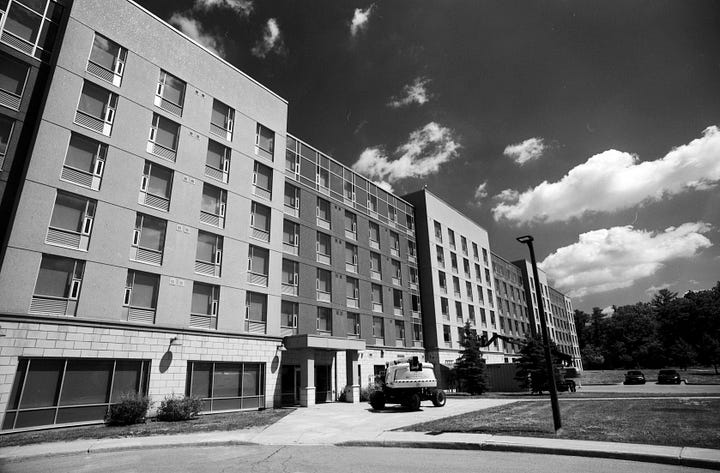
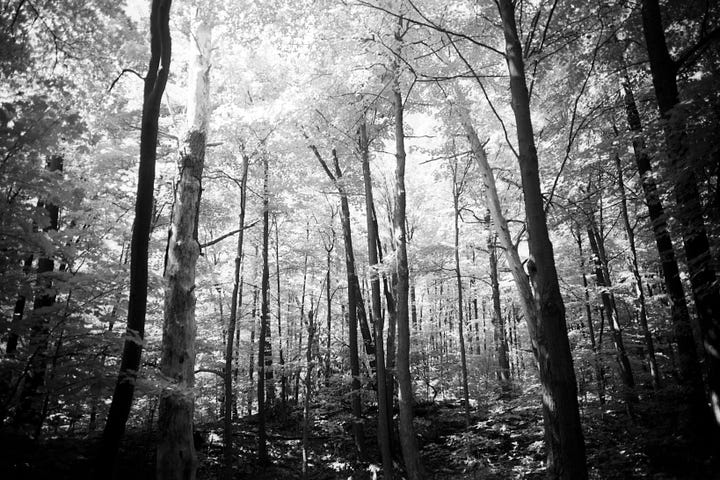
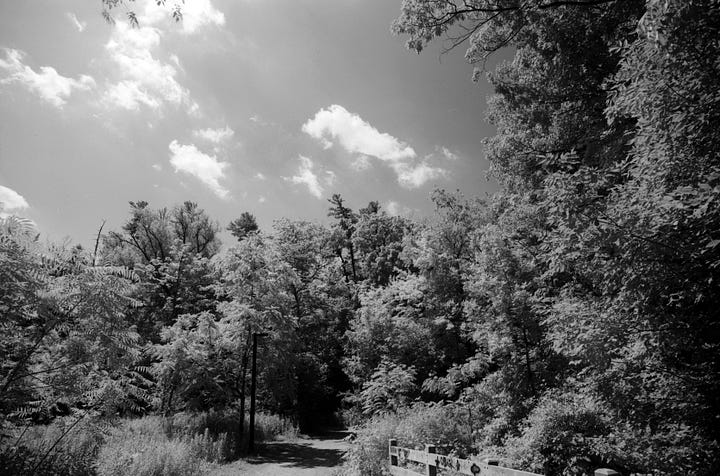
But what does all this have to do with a red filter? If you’re looking for the best possible results out of your red filter, an extended red-sensitive film will give you the best possible results. Because it will maximise what is called the “Wood Effect” where the blue skies are rendered darker and sometimes black, and your greens often are rendered white with the right conditions. At its core, the red filter is also known as a minus blue filter, in the sense that it blocks blue light from reaching the film. You also have yellow and orange in this category of minus-blue filters, and even your IR filters are blocking out all that blue light. Because the red filter is the darkest filter you’re going to be using (unless you’re into IR stuff), it has the highest filter factor of 8, meaning that if you’re metering externally, you have to over-expose by three stops. Not a big deal for a camera with TTL metering, but if you have an external meter, adjust the EV by -3 or set the ISO three stops slower (over-expose). But then develop normally.


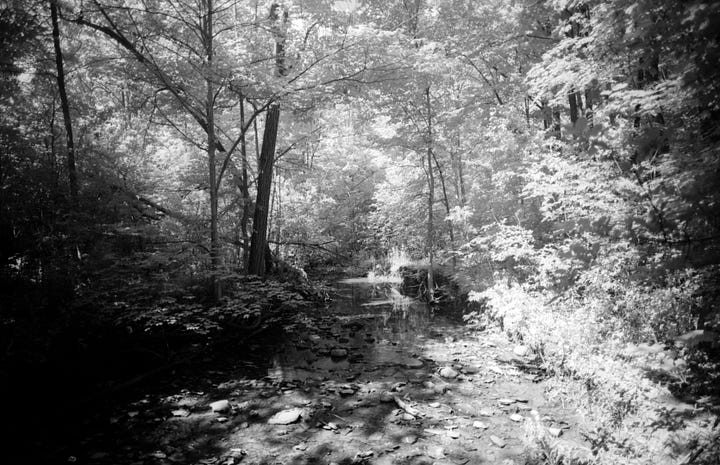

For the best results, it is essential to work under optimal conditions. You’ll want to shoot on bright, sunny days under high-contrast light. A lot of blue light will maximise the results of using a red filter, and some lovely green foliage will add that extra pop. Plus, puffy white clouds to break up the sky. Personally, a good quality filter is also key; I like Tiffen products, and most of my filters are from that brand. However, Hoya and B+W are also good folks. If you are a little unsteady, use a tripod and a cable release. As for film stocks, films like Rollei RPX 25, Rollei Retro 80s, Rollei Superpan 200, Rollei IR 400, and Rollei Retro 400S, as well as Ilford SFX 200, all have excellent extended red sensitivities. Probably the best thing you can do is think each time you frame up your image. While you’re seeing the world through literal rose coloured glasses, you can get a sense of how the final image will look. Even in colour, you’re going to notice a darkening in the sky and any blue colour in the frame. You’re also going to see the greens are turning lighter, especially when backlit. My best results have been with strong sunlight onto the subject from behind me.


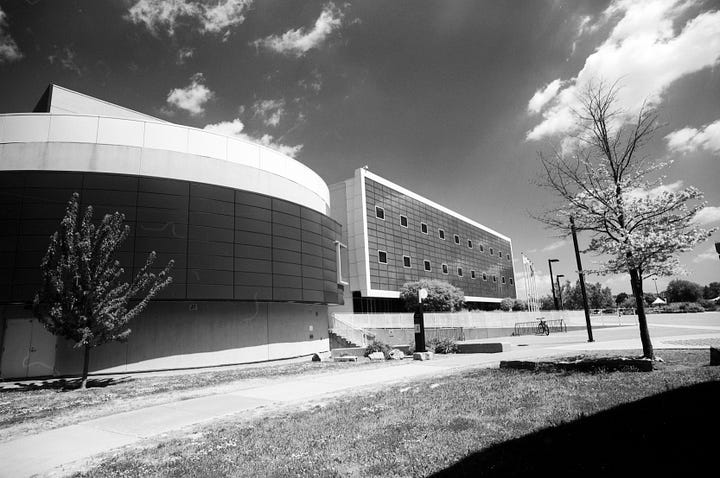

This type of photography isn’t for everyone; it’s a look and feel that's often radically different from what your normal photos look like. It’s not a style of photography that I usually chase, but when the mood strikes and the conditions are right and I have the right films in my kit, I’m looking forward to it. And you don’t have to stick to nature, urban environments work well also. For those interested in the technical aspects of these photos, they were shot with a Minolta Maxxum 9, using the Maxxum AF 20mm f/2.8 lens and a Tiffen Red-25 filter. I used Rollei RPX 25 and exposed it at ASA-100 and developed it in Fujifilm Microfine (1+1).



A bland blue sky seldom looks good on any B&W film, IMO, Alex. All we have to play with is contrast, tone, shape and texture. My preference is to have a darker sky when shooting B&W - whether it's film or digital. In the brighter days of summer, I tend to shoot 720nM converted digital and blue skies are almost invariably darkened. I'd say "love" the red filter rather than don't be afraid of it 👍
My dark red filter was probably my best non-camera gear purchase. I haven’t figured out what films are best for it, but when I luck into getting it right it gets me some great results. I’ll need to check out this film and try it. These shots look great!!